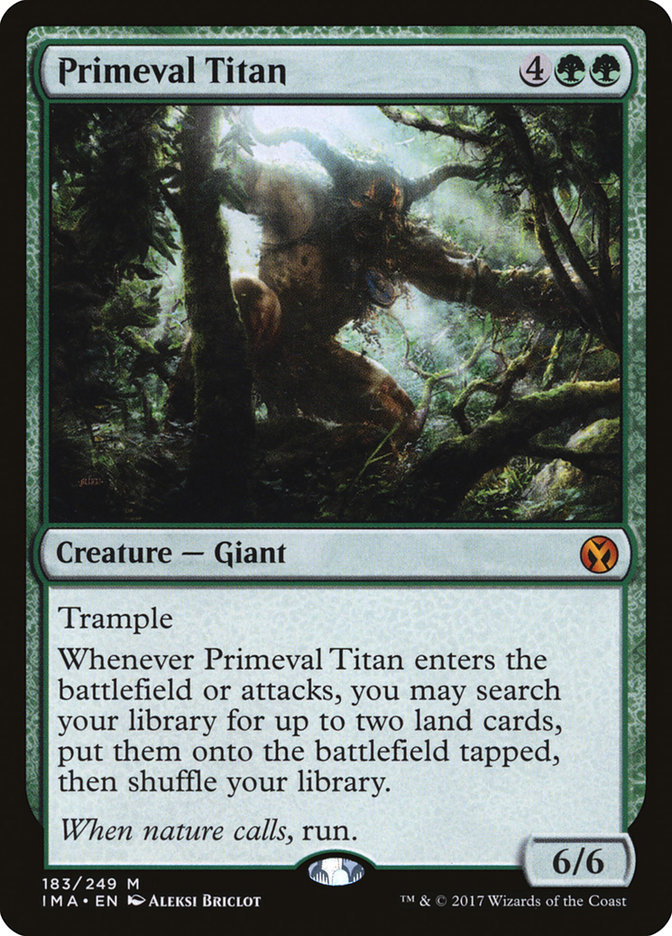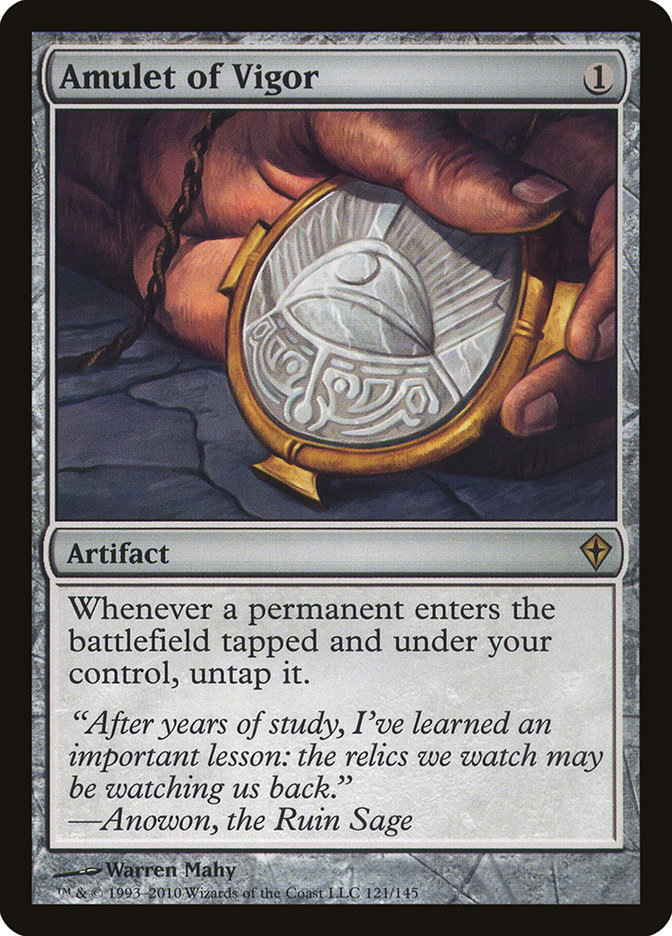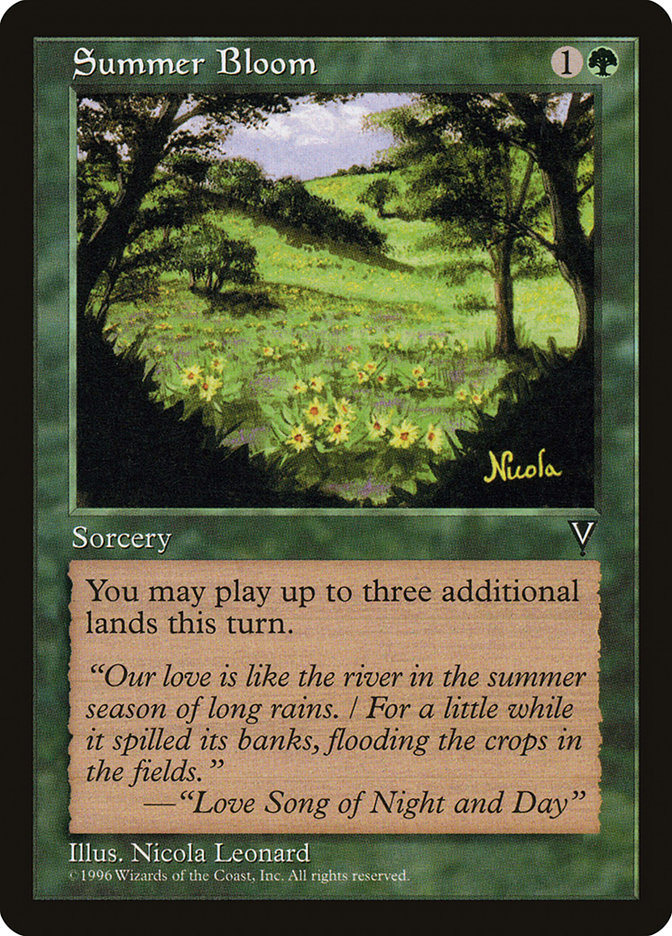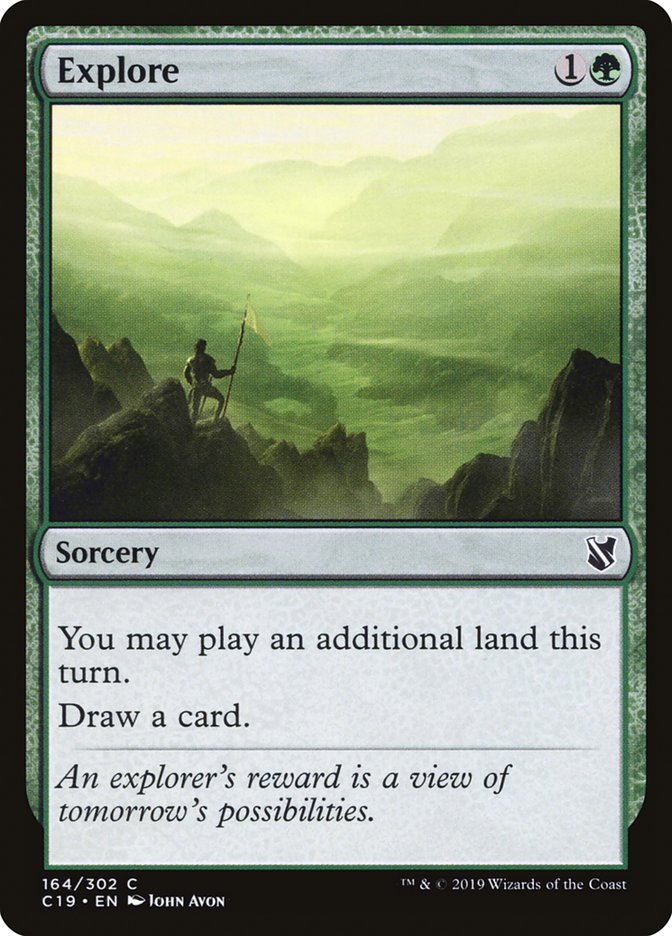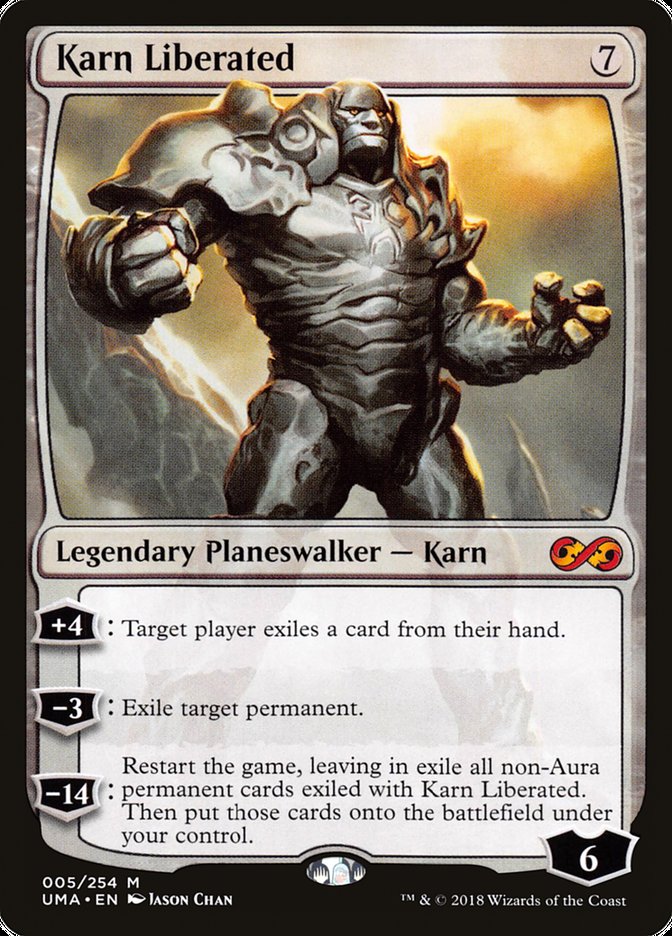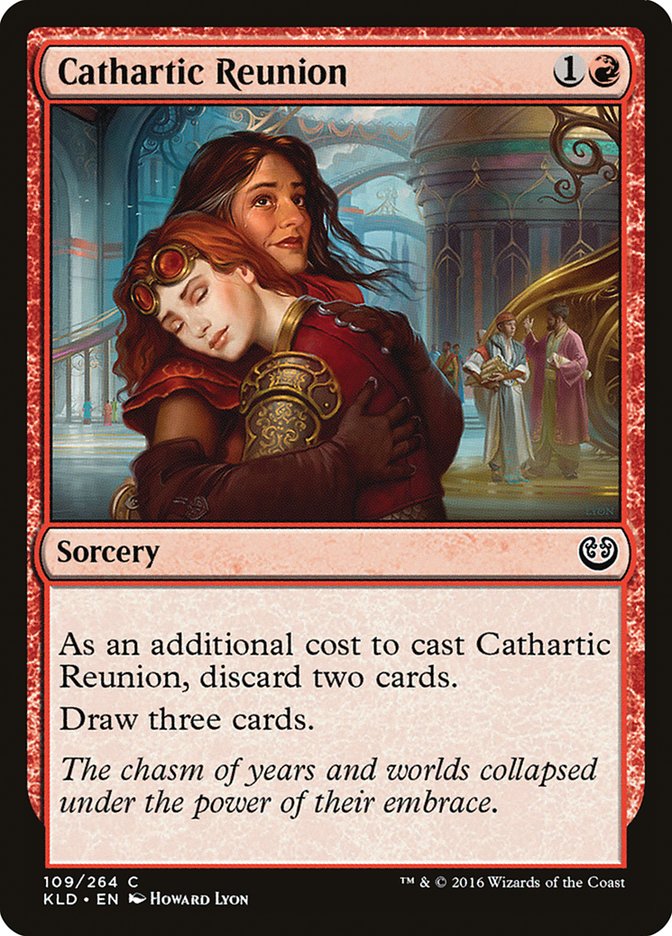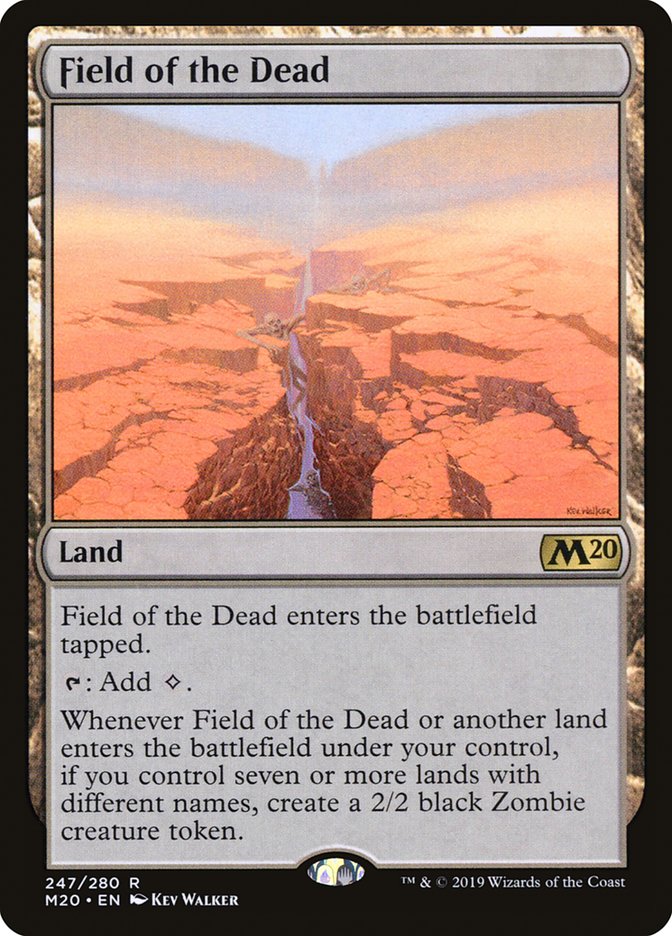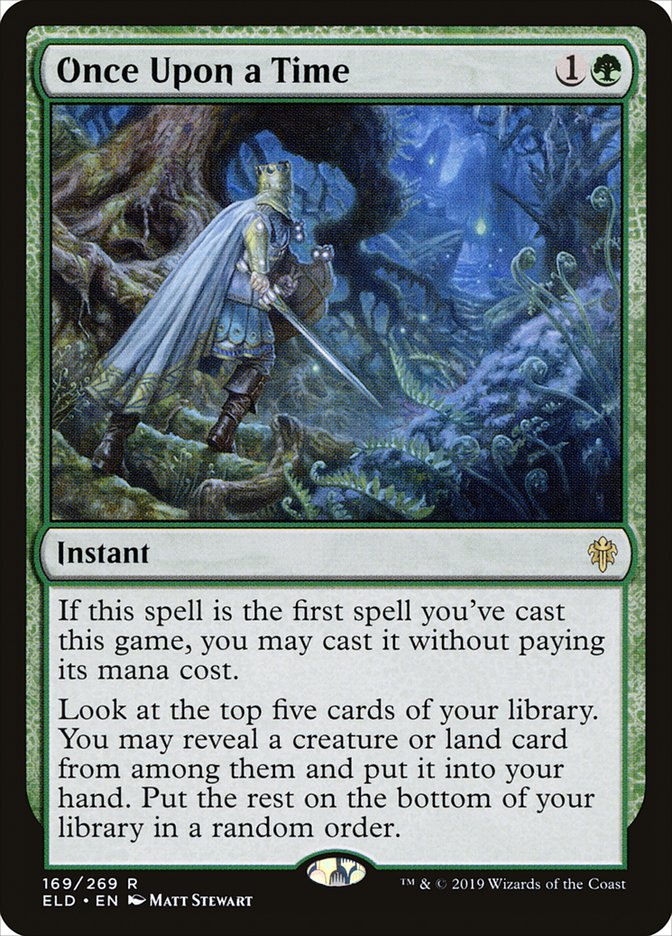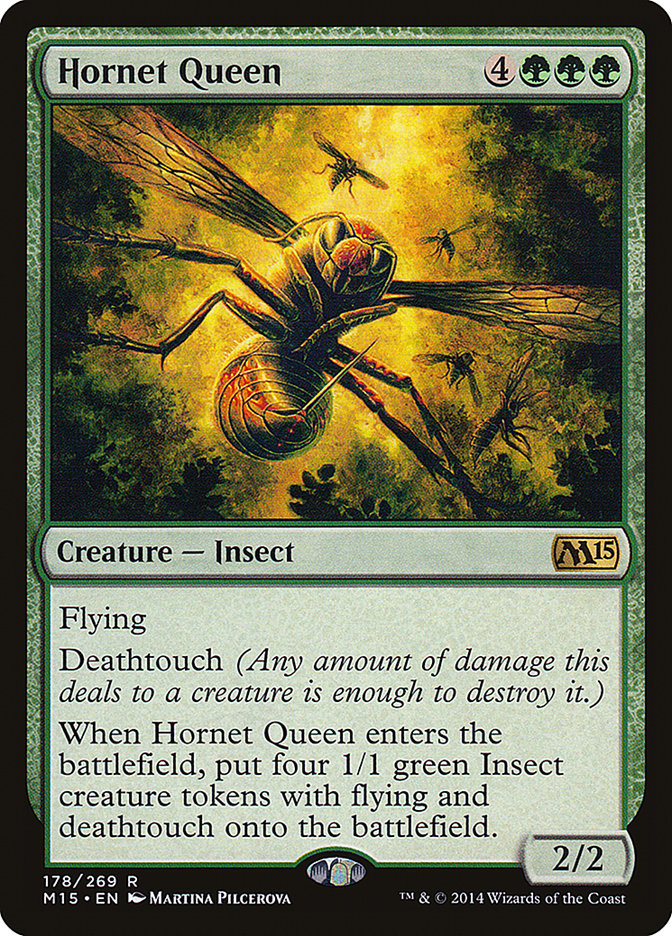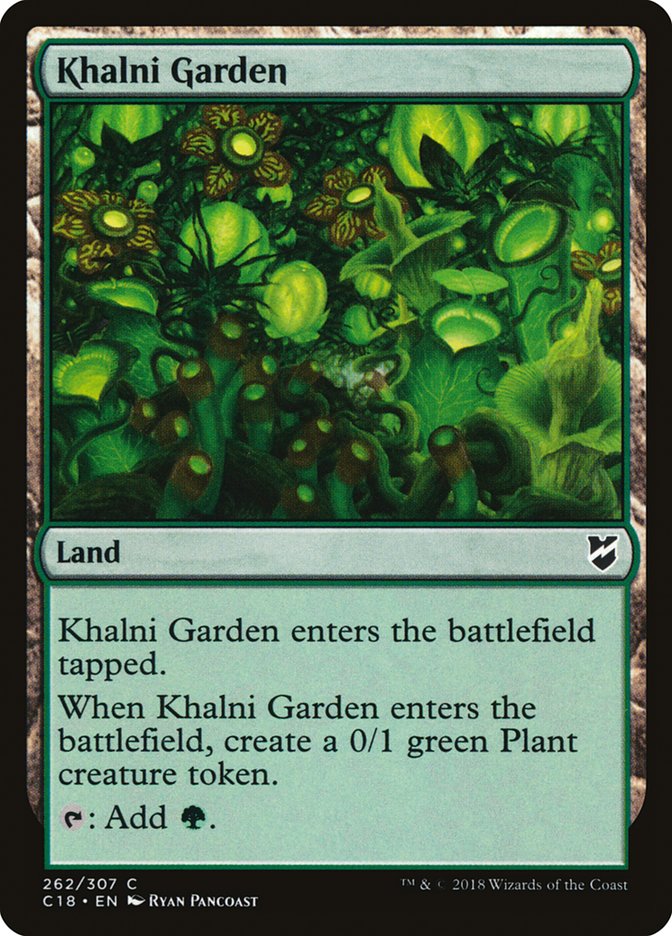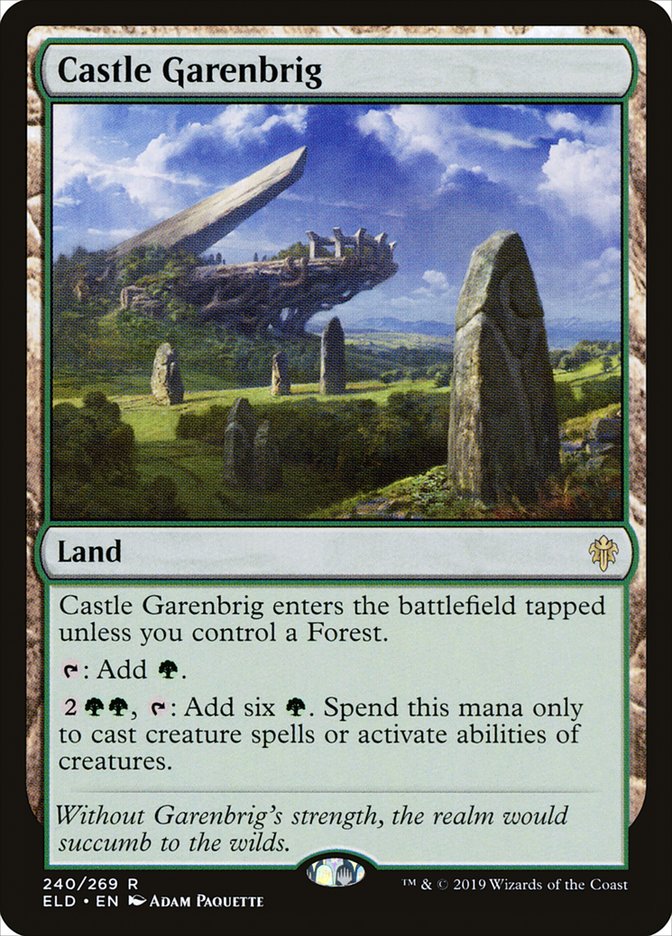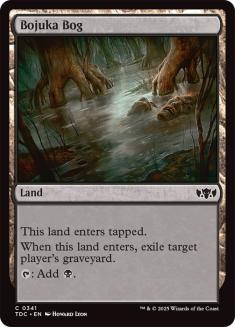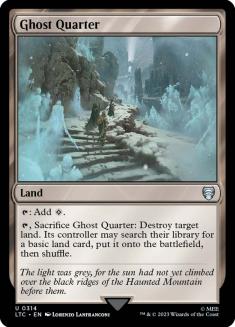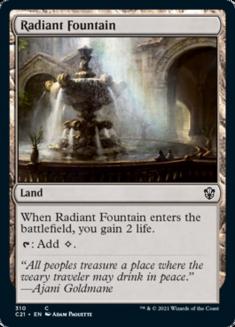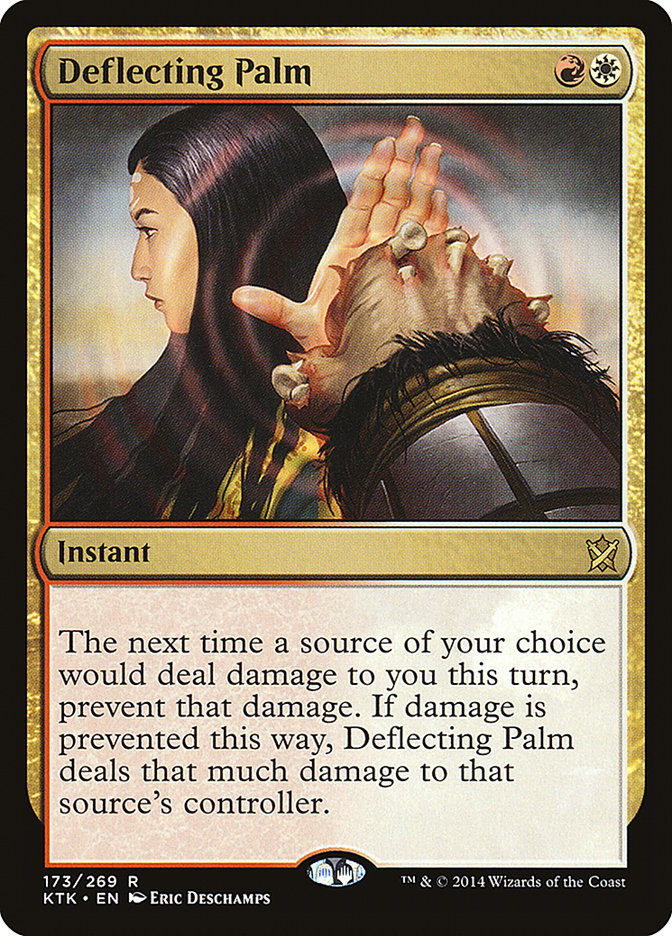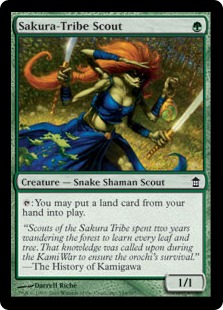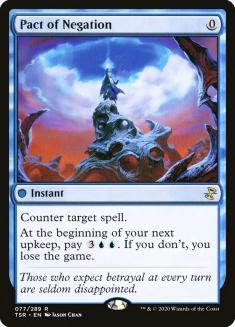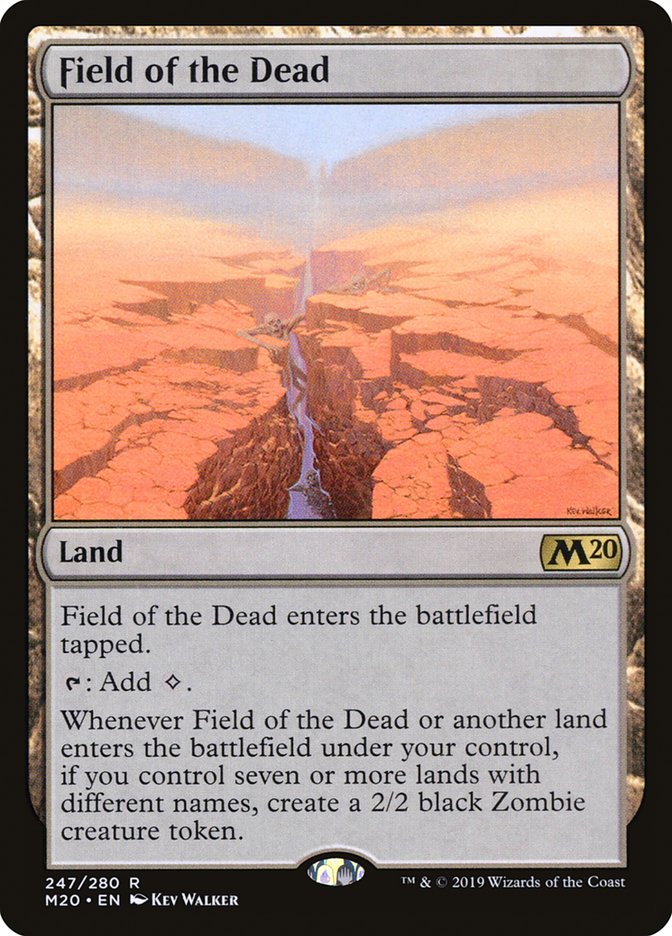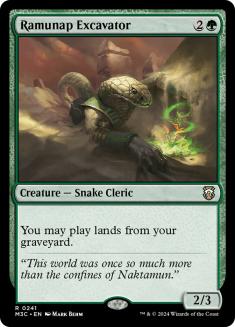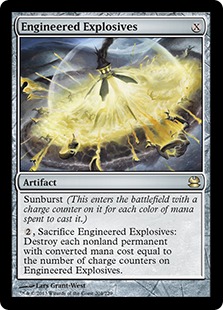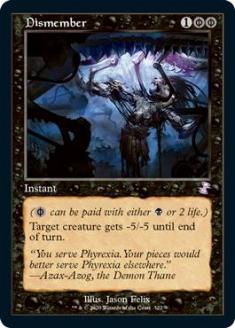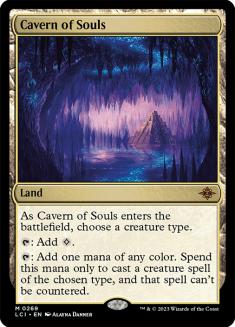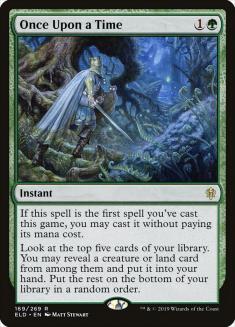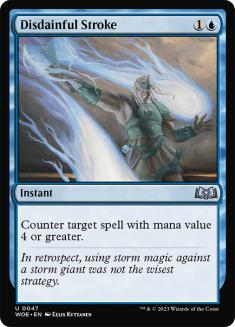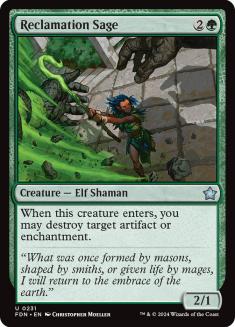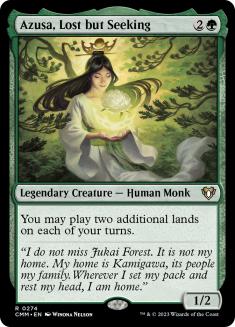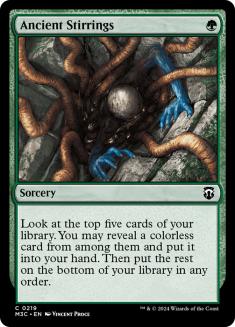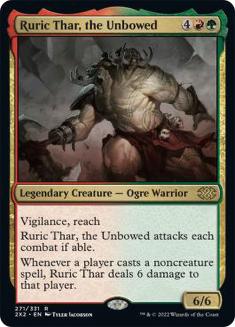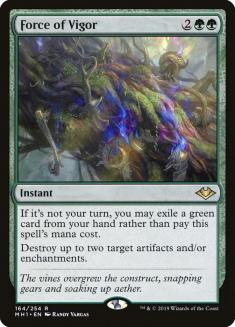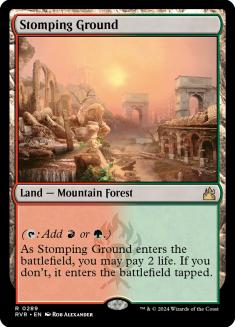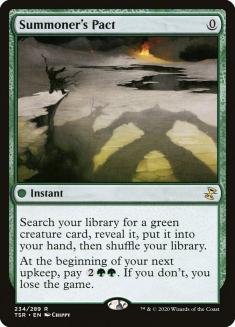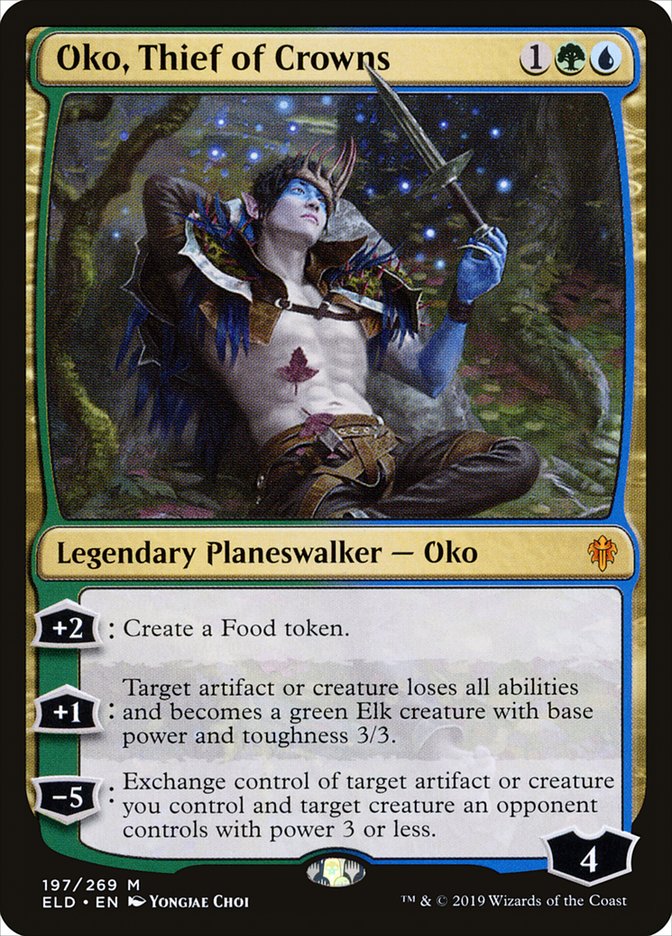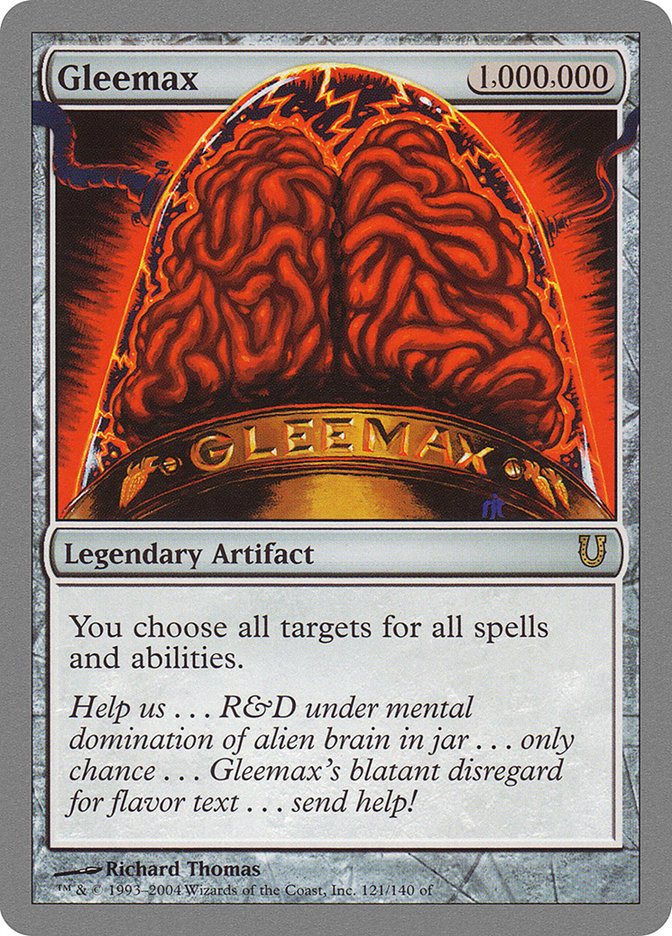Once Upon a Time, there was a combo deck with a really high power ceiling. It was easily the best deck in Modern at the time, even if it did have some Blood Moon issues.
Then its best weapon got banned, and it definitely deserved it. In the years since then, it still functioned, but something was off.
The last few cards in the deck were frankly just bad. No matter what they were, the deck just had some stinkers. Often your hand would be just… lands and stuff. But that was fine, since more of the time you just had a good one, and everyone has a fail rate. Right?
The middle of 2019 was the lowest point for Amulet Titan since the banning of Summer Bloom.
Amulet Titan had all the traditional issues of ramp combo and then some. You need physical cardboard to make mana, but also you need the right lands in the right order. All Simic Growth Chamber and all basic Forest are both failure modes. And the ramp cards, which are just that. Azusa, Lost but Seeking doesn’t actually tap for mana, whereas Farseek does.
A mulligan kinda sucks for Amulet Titan and sucks even worse when you naturally can draw cards like Hive Mind or Walking Ballista. And every other good deck could just ignore the fail rate. The old “Tron can mulligan to three and win” joke was actually just fact.
One of the best cards possible for Amulet Titan was printed, and no one even really noticed because the deck was in such a bad place.
Most of the Blood Moons in the metagame left with Faithless Looting, and it didn’t matter.
Once Upon a Time lets Amulet Titan be a deck of all functional cards. It’s more copies of the bounceland you need. Or normal land. Or ramp card. Or threat. Really, anything. Your seven-card hand baseline suddenly is Turn 4 Primeval Titan, instead of somewhere around a piece short of that. All your mulligans look like they can field six real cards and a real gameplan. It’s also Serum Powder, if the spell side of Serum Powder costs two. It’s something you already wouldn’t mind in this deck, but that also gives you free opening hand consistency.
And now we can look back at Field of the Dead and how unbelievably absurd that card is against anyone. If they’re playing fair, they can’t beat Field of the Dead because Primeval Titan leaves manaless incremental value around. If they try to interact with you in any way, they turn into a fair deck that can’t beat Field of the Dead. You used to struggle with Azorius Control because they could handle all your threats one-by-one. Zombies don’t come like that.
I kept six lands, Sakura-Tribe Scout on the play at SCG Philadelphia against a Death’s Shadow deck. One of those lands was Field of the Dead. My opponent died horribly turns later to the Zombie horde. I got to cackle like a maniac when their Turn 1 Inquisition of Kozilek saw five lands, no spells. It was glorious.
There were so many cards Amulet Titan used to play to do the things Field of the Dead does as a single card, and they all suck now. Field of the Dead not only does all their jobs, it taps for a mana.
Amulet Titan is back to reclaim the combo and ramp thrones in Modern.
Creatures (12)
Lands (28)
- 1 Snow-Covered Forest
- 2 Gemstone Mine
- 1 Boros Garrison
- 1 Selesnya Sanctuary
- 1 Sunhome, Fortress of the Legion
- 3 Gruul Turf
- 1 Stomping Ground
- 1 Breeding Pool
- 1 Ghost Quarter
- 4 Simic Growth Chamber
- 1 Vesuva
- 3 Tolaria West
- 1 Misty Rainforest
- 1 Bojuka Bog
- 1 Slayers' Stronghold
- 1 Cavern of Souls
- 1 Radiant Fountain
- 1 Field of the Dead
- 2 Castle Garenbrig
Spells (20)

As with most Week 1 lists, the truth of the matter was somewhere between the successful lists. Matt Dilks’s team won the event, and my team came in ninth.
A year ago, I covered the basics of how to play Amulet Titan. Not much has changed with the core operations of the deck, so if you are looking to learn some combo fundamentals, start there. Today, I’m going to talk the specifics of the latest Amulet Titan lists and sideboarding.
Matt Dilks and I came to almost identical conclusions for SCG Philadelphia when it comes to the spells. There are 30 identical spells, and those are the 30 spells you kinda have to play: bunch of four-of core combo pieces, and Engineered Explosives and Pact of Negation as tutor targets. We both played a bonus tutor target, which honestly is basically chosen at random from the reasonable options.
The piece Matt had that I didn’t was Castle Garenbrig. I had played with Castle with fewer Forests, and it was costly. Enters-the-battlefield-tapped land slots that aren’t bouncelands are at a premium in this deck, since you really want to play a Turn 1 spell. But once you realize Gemstone Mine isn’t a requirement and you can add Breeding Pools, everything works out fine.
The only changes I’ve made to that segment of the mana are adding a Stomping Ground for sideboard red mana and turning a Breeding Pool into a Misty Rainforest now that fetching is relevant beyond Field of the Dead triggers.
The entire reason Castle Garenbring is good comes down to a single piece of math. Sakura-Tribe Scout Turn 1 gives you five lands on Turn 3. Castle Garenbrig is an untapped way to push that to Primeval Titan, and Turn 3 Titan without Amulet of Vigor is the dream.
There’s really a chance my third Gruul Turf should just be a third Castle Garenbrig. The piece I’m extremely confident my team had right was the sideboard and how to use it.
VS Burn
Creatures (12)
Lands (20)
Spells (28)
- 4 Lightning Bolt
- 4 Lava Spike
- 4 Lightning Helix
- 4 Rift Bolt
- 4 Searing Blaze
- 4 Boros Charm
- 4 Skewer the Critics
Sideboard

Out:
In:
The second Engineered Explosives is a close call and Stomping Ground is also cuttable.
You can generally cut down to 27 lands in sideboarding against any deck, with 28 being a bit of a sweet spot where you aren’t sacrificing much. One of the huge draws of having lands in the sideboard as your upgrades is you can almost always maintain this balance.
But that’s only half of the “Radiant Fountain in the sideboard” equation. Once you play with the card, you realize Obstinate Baloth is a joke. With multiple Radiant Fountains, Primeval Titan is always Obstinate Baloth that keeps Obstinate Baloth-ing. You can always find multiple Radiant Fountains with the first trigger and then Vesuva or bounceland them over and over. Remember: you can’t Vesuva the other land you find on a single trigger. Why bother tutoring for the worse version?
And have you seen what happens to Burn when Amulet Titan naturally draws Radiant Fountain? Play Fountain, gain two. Bounce it, play it again, gain two. Cast Primeval Titan, I was at sixteen life before that, are we done here?
Burn is getting to the point where it can definitely steal games from you with aggressive draws, but it’s so easy to build your Amulet Titan deck to make a large percentage of your games in the matchup look like a joke.
Just remember Deflecting Palm is a card, hence why you want Pact of Negation to tutor for.
VS Jund
Creatures (12)
Planeswalkers (8)
Lands (24)
Spells (16)

Out:
In:
You can’t have Sakura-Tribe Scout in your deck against Wrenn and Six. Traditional sideboard guides against Jund would trim Azusa, Lost but Seeking or Amulet of Vigor in this matchup, since they aren’t mana-producing cardboard that sets up topdecked Primeval Titans, but at least those cost your opponent a card to answer.
Since you slow down a bit, you can load up on answers to force them to also slow down. If you’re both trading while hitting land drops, you’re in prime position to rip a win condition. Once you stick a Primeval Titan, your Jund opponent can never win thanks to Field of the Dead. Even if they hit the first with Fulminator Mage, are they really going to beat the second Field or third with Vesuva or Ramunap Excavator, or the Primeval Titan still hanging around?
VS Mono-Green Tron
Creatures (7)
Planeswalkers (8)
Lands (17)
Spells (28)

Out:
In:
Next premise: any time you sideboard interactive instants and sorceries in a linear matchup, you can trim on Once Upon a Time. I never cut them all, but one or two are negotiable when your two-mana turns have a use besides more cantrips and you have more whiffs to flip.
Reclamation Sage is just a hedge against Karn, the Great Creator for Ensnaring Bridge. I’m closer to sideboarding zero artifact removal than all of it since these cards don’t actually stop Urza’s Tower, even if part of me loves bringing in Force of Vigor on the draw to mise an Expedition Map.
VS Urza Outcome
Creatures (9)
Planeswalkers (2)
Lands (18)
Spells (31)

Out:
In:
It turns out that most of the traditional artifact hate is terrible against Urza Outcome. Shatters don’t matter and they don’t need to tap their Mox Opal for mana under Collector Ouphe. Their engines are the creatures. You want Dismember, not Naturalize or even Collector Ouphe.
There are currently more total sideboard cards you could want in this matchup than you can reasonably bring in, but it works out that you don’t want every copy of each. Engineered Explosives clears tokens and nonsense but is slow against actual threats. A third counterspell is fine, but Sai, Master Thopterist and Emry, Lurker of the Loch sneaking through both is a concern. Reclamation Sage is just there to let a different tutor route kill a Construct token after Primeval Titan resolves. Drawing the second copy of any of these effects is a bit too much, even if the first has real utility.
In the true “overload on interaction” sideboard plans, Azusa, Lost but Seeking must go. It requires too much cardboard in too specific a timeframe when you are spending mana and cards on answers, where Sakura-Tribe Scout just lands on Turn 1. Multiple Azusas are also much more of a clunkfest than multiple one-drops, and Azusa gets snagged by a common Engineered Explosives number to clear their legendary threats.
Bokjuka Bog stays in here. Gotta clear those Emry graveyards.
VS Whirza
Creatures (7)
Lands (20)
Spells (33)

Out:
In:
Same deal as Urza Outcome, but you need to blow up Ensnaring Bridge, not Sai, Master Thopterist; and need to counter Whir of Invention, not preemptively stop Paradoxical Outcome. Fry stays in where Dismember doesn’t as a hedge against Ashiok, Dream Render, which is an absolute nightmare for this deck.
VS Azorius Control
Creatures (9)
Planeswalkers (5)
Lands (17)
Spells (29)

Out:
In:
There’s a similar concept of trimming cantrips that don’t find interaction, as in the combo matchups, but flipped. Ancient Stirrings is worse in the grindy matchups than Once Upon a Time, which actually finds your killer threats, so it ends up as the shaved cantrip here.
Against Field of Ruin, Sakura-Tribe Scout is a game-changer, allowing you to flash in Simic Growth Chamber to save key value lands. There’s often a sub-game of making sure your lands are on the battlefield just long enough to do their job, and then back in your hand for safe keeping.
If your opponent is on Stoneforge Mystic, Engineered Explosives is better than Disdainful Stroke since they will have fewer copies of Cryptic Command and Jace, the Mind Sculptor. Explosives is better than Reclamation Sage since it can also knock out a planeswalker, which includes the previously mentioned Ashiok disaster.
VS TitanShift
Creatures (8)
Planeswalkers (1)
Lands (25)
Spells (26)

Out:
In:
This sideboard plan is mainly here to remind you that TitanShift plays Damping Sphere. Also, Once Upon a Time is slightly worse than Ancient Stirrings in these turbo-combo matchups with less interaction since Amulet of Vigor is a bigger boost than a ramp creature to find.
You want the Ghost Quarters to pop off Valakut, the Molten Pinnacle, but Ramunap Excavator is not going to run them out of basics.
Also, as evidenced here, the Disdainful Strokes are a massive upgrade over Negate in Primeval Titan mirrors. Not having them feels really bad, as I experienced multiple times at SCG Philadelphia.
VS Grixis Death’s Shadow
Creatures (15)
Planeswalkers (1)
Lands (17)
Spells (27)

Out:
In:
This is what a sideboard plan against a Thoughtseize deck without Wrenn and Six looks like. Don’t trim threats (Once Upon a Time is a threat), add removal, and keep the inexpensive Sakura-Tribe Scout that might even mise an activation before dying and sacrifices well to Liliana of the Veil. Radiant Fountain versus Stomping Ground as the land to trim is close since Engineered Explosives usually just hits one, but usually you take damage in massive chunks via Death’s Shadow plus Temur Battle Rage, so two life is less relevant than green mana.
The only change against other Death’s Shadow variants is that you may want Ramunap Excavator against Unearth variants to battle through repeated Fulminator Mages.
VS Eldrazi Tron
Creatures (16)
Planeswalkers (5)
Lands (24)
Spells (15)

Out:
In:
This is an exercise in hedging against Chalice of the Void. Both one and zero are common spots for it to land, and that means trimming various Pacts and Ancient Stirrings. The second Disdainful Stroke is negotiable if you see a bunch of Cavern of Souls, but the flex lands they play vary a ton between lists.
Their best draws involve fast Eldrazi and not the Urza’s Tower half of their deck, since one of those is easier to Ghost Quarter. Dismember is a notable upgrade to red removal in this matchup.
If you get a chance to go off on a Ramunap Excavator / Azusa, Lost but Seeking / Ghost Quarter spree, do it. The Strip Mine lock is a very real end-game against the deck with two copies of Wastes.
Oko, Thief of Crowns
One late addition suggested by my fellow Team RIW member Zach Allen is Oko, Thief of Crowns. It would take the slot of the third counterspell, though I’m unsure if that’s a Disdainful Stroke or Negate, and third removal spell, which is clearly Fry. The card just does everything and is fundamentally powerful.
To show how wide-reaching it is, of the listed matchups, you would want it against Burn, Jund, Azorius Control, Whirza (but not Urza Outcome), Grixis Death’s Shadow, and Eldrazi Tron, and I can’t imagine the card is anything but great in the Amulet Titan mirror. You gain life, negate large creatures and artifacts like Ensnaring Bridge or Sword of Feast and Famine, and eventually generate a stream of threats an opponent must answer. It even bashes down an Ashiok, Dream Render. What isn’t there to like about Oko?
I’ll end with the same caveat I did last time.
When you commit to Amulet Titan, it is really easy to get sucked in and play the deck too long. The grand puzzle it offers makes you feel like you can always find something to answer some matchup, but in reality sometimes you need to take a step back and realize there’s an easier way.
So, when I’m starting from this perspective and saying Amulet Titan is good, you can be sure I mean it.
Play this deck while it’s still good and you have the chance.


